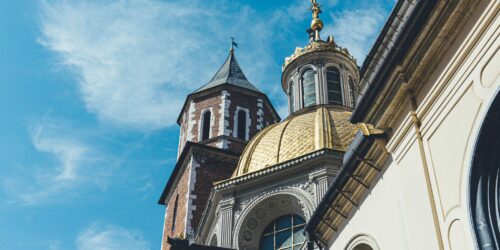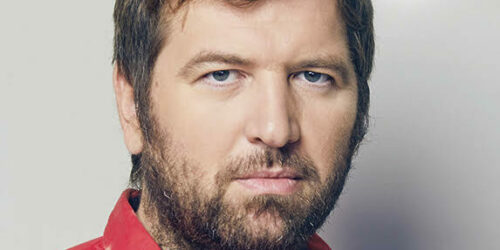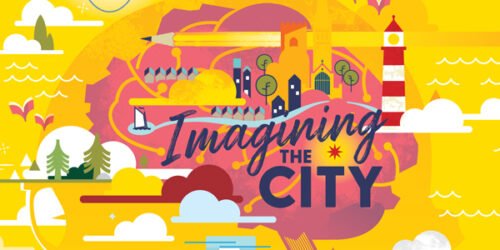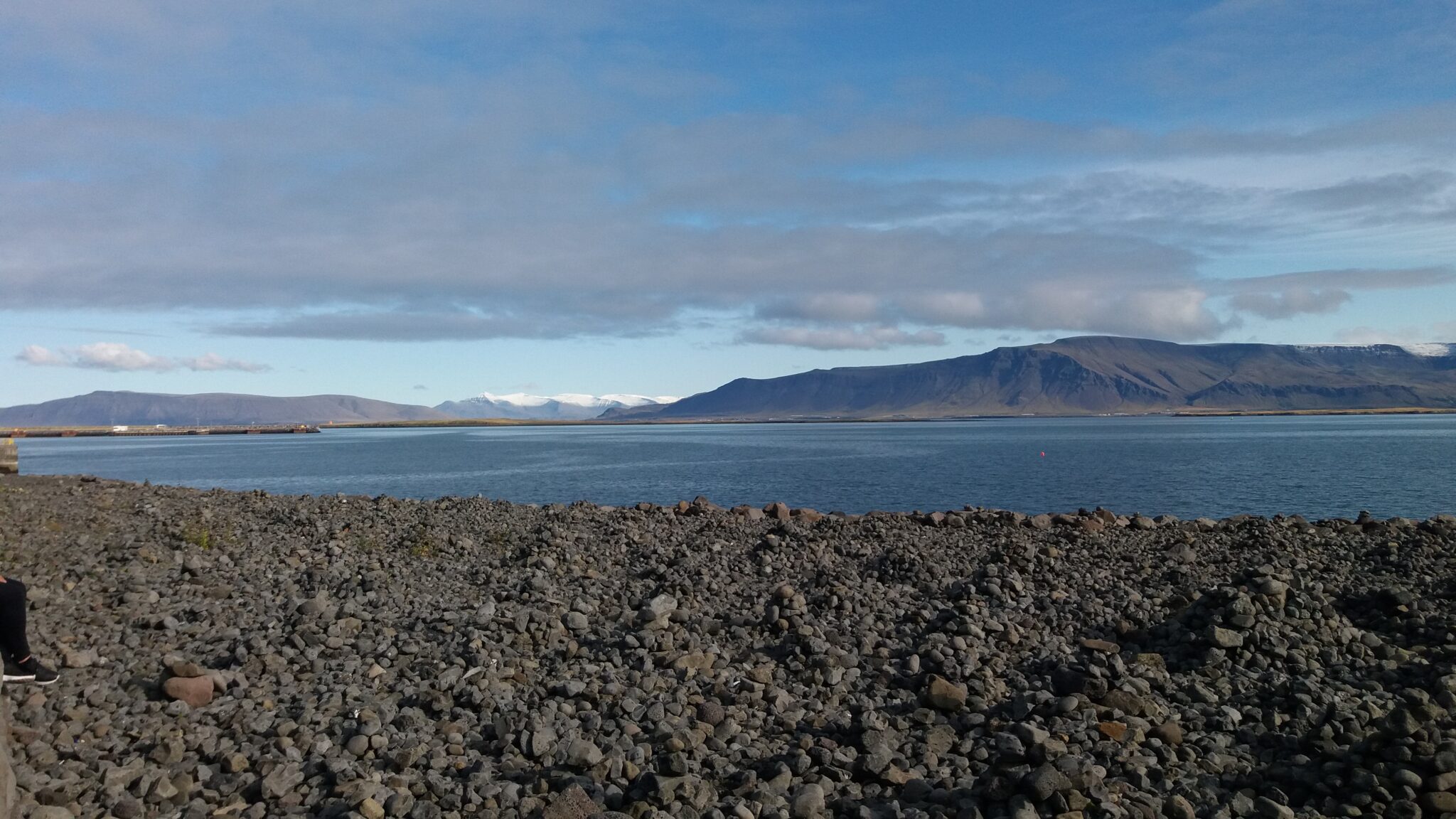
Valur Gunnarsson is a historical fiction writer based in Reykjavík UNESCO City of Literature. As part of his virtual writing residency in Norwich throughout February 2021, he embarked on a literary walk along the coast in dialogue with W.G. Sebald and Icelandic literature.
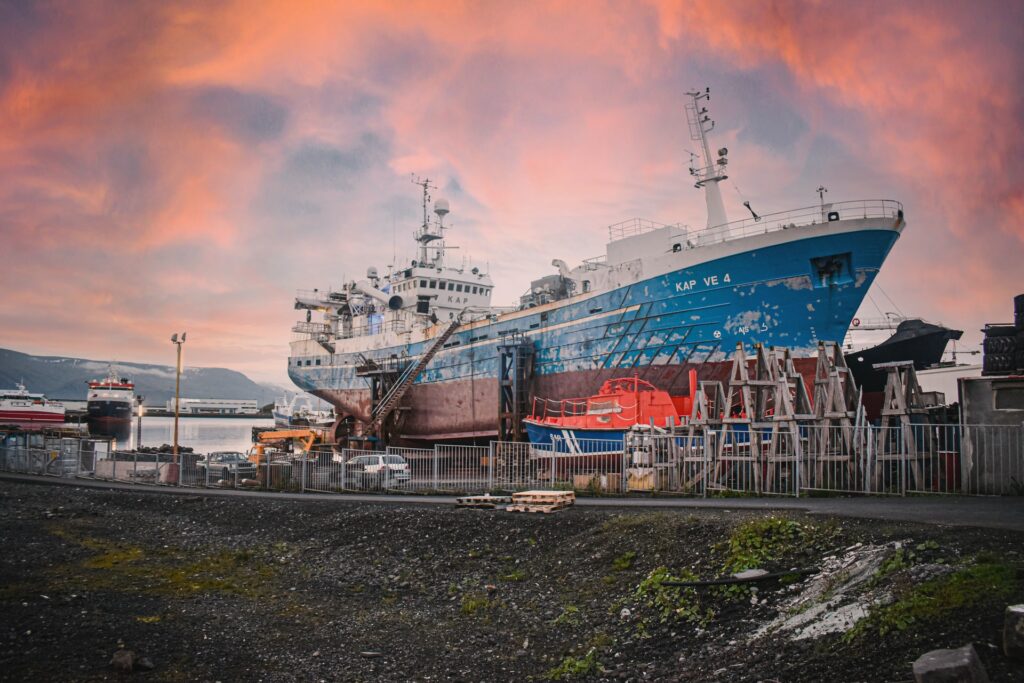
1. The City
W.G. Sebald begins his account of walking across East Anglia at the end of the dog days in 1992. A year to the day later, the central narrator is admitted to a Norwich hospital and wonders if there is any truth in ancient superstitions regarding the Dog Star. Visible from early July until mid-August after a spell hiding behind the sun, the advent of Sirius was by ungrateful southerners seen as heralding the hottest days of summer and other calamities. To Icelanders, bereft of hot days in general or indeed dark summer nights, there is little reason to saddle the brief summer with such an unflattering moniker. The only known summer curse here is said to be that if it rains on July 13th, it is presumed to rain for the rest of summer. And yet the dog days are reflected in the name of one of the stranger eras in Icelandic history, the brief reign of the Dog Day King.
Iceland largely exited world history at the end of the Viking Age, running out of both ships and the wood to build them. Occasionally it reluctantly re-entered it, now as the object rather than the subject of pirate raids, the English in the 1400s, the Turkish-Algerian attack in 1627. A foreign fleet again arrived in 1809 and this time they intended to stay.
It was a strange invasion. The Napoleonic Wars had pitted Britain, master of the oceans, and Denmark, masters of Iceland, on opposing sides. In the midst of this, an English ship, led by a Dane but representing neither country, struck anchor outside Reykjavík harbour. Their intention was to sell soap and other scarce products to the no-doubt ill-washed and starving Icelanders, as few supplies had arrived due to Danish monopoly and global war.
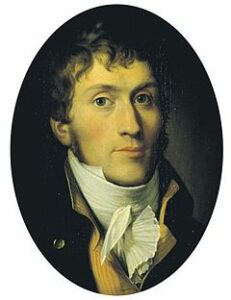
Count Trampe, the highest Danish authority in the land, was having none of it. The leader of the soap salesmen decided that revolution was the best course of action. This 19th Century Tyler Durden swiftly had Trampe arrested and himself assumed the title ‘Protector of Iceland, Highest Authority on Land and on Sea.’ Proclamations were issued wherein the inhabitants were informed that they were now free from Danish tyranny. This did not make much of an impression on the locals but Jörgen Jörgensen, who had previously been a prisoner of war in England where he fell in with the soap merchant Samuel Phelps, was henceforth to be known as the Dog Day King.
As such he has left a considerable cultural footprint. Various histories have been written, the most recent by Sarah Blakewell in 2005. That same year a novelisation appeared, written by former Finance Minister Ragnar Arnalds. Ten years later, Einar Már Guðmundsson, one of Iceland’s most esteemed writers, wrote a creative non-fiction account of his life and times. But most beloved of all is the musical Þið munið hann Jörund (You Remember Jörgen) from 1970. Here, the newly proclaimed Highest Authority on Land and on Sea is having problems being taken seriously by the Icelanders. ‘Shouldn’t we hang someone?’ one of his aides suggests as a remedy.
Jörgen never did hang anyone and as the dog days of summer neared their end, the Royal Navy proper arrived and had him arrested. The locals did little to protect their revolutionary leader, nor did they protest when the country was ceremoniously handed back to the Danes, a country with which Britain was then currently at war. Trampe was released, and Jörgen’s flag, portraying three flattened codfish, was taken down, to be replaced by the Dannebrog for the next 100 years or so. Neither was Jörgen himself hanged, but rather ended his life as a constable in Tasmania, having taken part in exterminating the indigenous people during the Black War. He finally received the title ‘King of Iceland’ on his gravestone.
The Danes let go of history when they are done with it but the English are wont to hang on to it, at least for a little while longer.
The narrator makes a recovery in Norwich hospital and chapter three in The Rings of Saturn is devoted to that capricious creature the herring. Fishermen south of Lowestoft doze by day among abandoned ships and rusting boat-pulling cables while Sebald recounts a Natural History of the North Sea from 1857, describing vast shoals of herring running aground, frantically collected into baskets and crates but mostly rotting on the shore. Glut has been replaced by dearth as present-day fishermen scan the sea for a glimpse of the odd whiting, flounder or cod.
Streams of mercury, cadmium and lead and mountains of pesticide are to blame for the herring’s non-appearance, Sebald says. In 1968 the herring departed Iceland too, which led to one of the worst economic disasters in the country’s history. Fortuitously, in Australia at the time there was a dearth of white people and many relatives disappeared, Jörgen-like, down under after perusing the wanted ads. Even more fortuitously the cod remains, giving sustenance to the nation though no longer represented in the flag.
A further chapter in Saturn details the coastal area between Orford and Felixstowe, where all manner of secret weapons real and imagined are thought to be placed; Martello towers to thwart the French, death rays to ward off the Germans, nuclear missiles to annihilate the Russians. Iceland never had a secret weapon, apart from the wire cutters used ruthlessly against the English during the last Cod War. As one British trawler after another lost both catch and expensive equipment to the deep as the cables snapped, they were forced to head back home to unemployment in Grimsby, in Hull and perhaps even in Lowestoft. Did the fish manage to get out of the dislodged nets or were they consigned to a senseless death? In all wars, it is the innocent who suffer most.
It is a short walk from Austurstræti 22, where Jörgen held court in 1809 in the only house on the street, and to the harbour. In times of war Icelanders have stared with trepidation out at the sea, on the look-out for unknown vessels be they Turkish Raiders or English warships. When the latter finally did arrive in the spring of 1940, pushing through curious crowds, many were relieved that it was they and not the Germans, unlike what had happened in Norway and in Denmark. History had finally arrived in Iceland, and this time it was here to stay.
Not only had history been restored to a newly independent nation […] the stories had come back too
In my own work, it was the Germans who arrive in 1940, bringing with them a different sort of occupation. But in the actual history, the worst did not come to pass. Instead, independence followed and the crowds gathered on the harbour again in 1955 to welcome Halldór Laxness back from Stockholm, bringing with him Iceland’s one and only literary Nobel Prize. Not only had history been restored to a newly independent nation after that long Danish night when little was done or written; the stories had come back too. The Sagas themselves returned in 1971 and again the crowds were gathered to welcome the Danish naval vessel bringing its precious cargo from the Copenhagen museums. The Danes let go of history when they are done with it but the English are wont to hang on to it, at least for a little while longer.
Upon a hill overlooking the harbour is where the ‘Batterí’ was located, the small fortress that Jörgen erected to safeguard his republic but proved to be not up to the job, Iceland’s own Maginot Line. It was torn down a hundred years later and a statue of the first settler Ingólfur Arnarsson erected in its stead. He stands looking in the direction from whence he came, out towards the sea. Perhaps he should have done like Leifur Eiríksson, who stands on a bigger hill, and continued on to America.
Ingólfur’s view has recently become obscured. If he could turn to the right, he would see the Esja mountain, beloved of poets and painters alike. To the left, he would see the downtown area, Jörgen’s two floor wooden house-palace later occupied by the Danish governor, who decided that the stone prison across the street was probably warmer and had its residents evicted. It remains the seat of government to this day.
But Ingólfur sees little of the city that he founded, nor does he overlook the mountains or the sea. He is permanently to gaze on husk of the Marriott Hotel which continues to rise, even if the tourists, like the herring before them, have dispersed. Perhaps they will come back someday. On the other side of the hotel, residents of Reykjavík might be standing on the harbour looking to see if the ships will come, bringing not war but wealth, the silver of the ocean in the shape of fish, or cruise liners unloading a different kind of coin, selfie stick in hand.
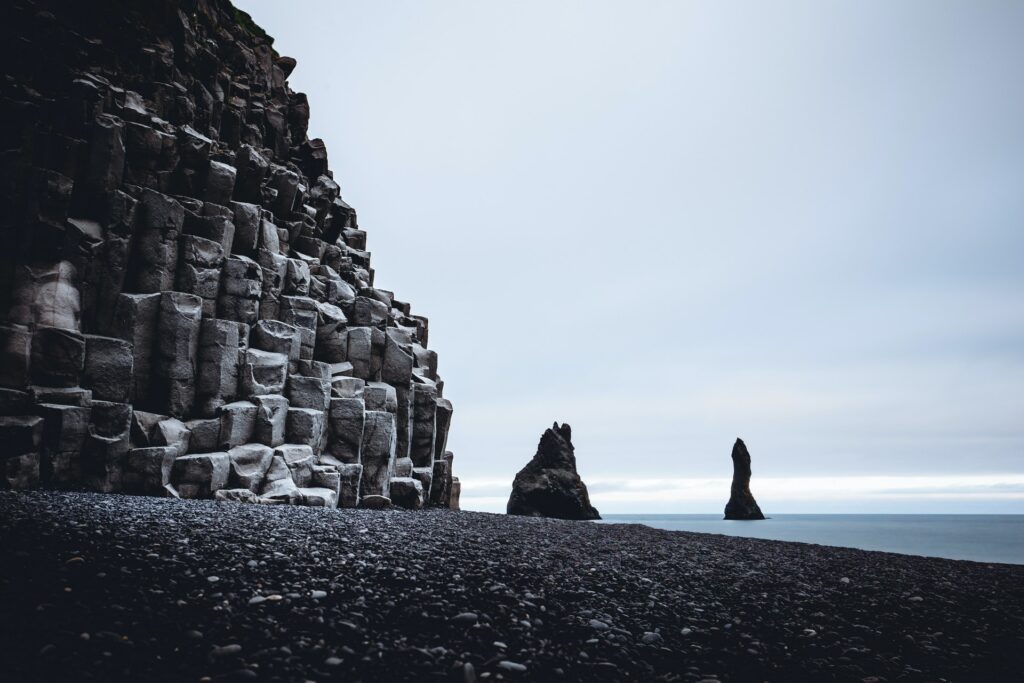
2. The Shore
It was only on my last day in Norfolk that I finally got to see the ocean. I was driven there by the playwright Arzhang Pezhman, of mixed Midlands-Iranian heritage and a good friend. He grew up tough on the mean streets of Wolverhampton where he had to defend both his heritage and his name. The Iranian in him wanted to fly a kite in the sullen breeze, the English part craved fish and chips. We go for the fish.
After, we wander along the shore and wonder what brought us to Norwich. For our generation, being a writer meant being a rebel, in the 20th Century sense of the word, and here we are doing a doctorate. ‘It’s not very punk rock, is it?’ Arzhang says. I concur. We are of, and from, the same age.
I am on my way home to tend to a summer job as a tour guide for the tuition. It’s still 2019. I do not yet know that I will not return. The day trips out of Reykjavík can span the whole southwestern shore, at the westernmost part of which is the bridge between the continents. In fact, the continental rift between Europe and North America, ever expanding in the age of Trump as it does in all others, runs right through Iceland. But they had to put the bridge somewhere to create that photogenic stroll.
As one heads west through the southern lowlands, one goes out of the black and into the green, from the desolate lava fields to one of the few fertile areas the island has to offer. It was here that Ingólfur’s men wanted to settle and had to look on in consternation as he continued towards what would become Reykjavík. Legend has it that Reykjavík was where his columns had floated to, and hence where the gods had wanted him to remain. More likely, the northern side of the Reykjanes peninsula offered shelter from the southern winds, nestled safely in Iceland’s lower armpit.
We are soon back in black, in Reynisfjara, the famed Black Beach. Not a single strip of land stops the waves gathering momentum between here and Antarctica. Their reach can be far inland when they finally touch shore, occasionally snatching a tourist with his back turned, dragging him out to sea, selfie stick and all, never to be seen again.
Norwich is also a child of the sea, even if it’s not visible from the city
Norwich is also a child of the sea, even if it’s not visible from the city. It was the nearest port of call for Medieval traders from the mainland, closer than London and nearly as big. It was to there that the strangers came from Flemish lands, setting up printing shops and breweries, sometimes both at the same time, thereby mangling the spelling of the soon-to-be world language so thoroughly that it would give Twitter users headaches 500 years later.
As befits a book named The Rings of Saturn by a German wandering through East Anglia, the story ends with a brief history of silk from Huang Ti to the Nazis. It was the Huguenots who brought it to Norwich and became a new batch of strangers there. I was once a stranger there myself. I am a stranger there no more.
Sebald also manages in the final chapter to squeeze in the historical Norwich resident Thomas Browne and his probably ahistorical library. Among the works cited is an account of the travels of Pytheas of Marseilles from the 4th Century BCE, perhaps the first man to circumnavigate Britain as well as reach Iceland, which may or may not be the northern island of Thule. Pytheas says that beyond Thule the air is thick, condensed and jellied and looks like sea lungs, an unreal place even in a time when much of the world was still unknown.
For strangers travelling to Iceland, be they Ingólfur Arnarsson who did settle, Jörgen Jörgensen who attempted to, or the various people that come and go these days by air as well as sea when not grounded by virus or volcano, Iceland seems impossibly distant, a land of wonder, almost unreal. But for those that live there, it is the outside world which inspires awe. In the novel Independent People by Halldór Laxness, an adopted daughter gazes with her farmer father out onto the ocean.
‘What is out there?’ she asks. The father answers, proudly showing off his knowledge:
‘Out there are the countries.’
Doesn’t that sound like a wonderful place to go?
Valur Gunnarsson grew up on the Viking trail in Reykjavik, Oslo and Yorkshire. He is best known as a writer of creative historical fiction; his first novel was a Viking fantasy and his third an alternative history where the Germans invade Iceland in World War II. Meanwhile, his second novel was a piece of autofiction set in the aftermath of the economic collapse of 2008. His fourth book, expected in March 2021, is in the same vein, but this time set in the former Soviet Union. He also co-founded Grapevine magazine and has made three albums and a poetry book.
 Imagining the City brings together five writers from UNESCO Cities of Literature across the world to explore connections between Norwich and their cities; link up with local writers; and work on a range of commissions. Read more
Imagining the City brings together five writers from UNESCO Cities of Literature across the world to explore connections between Norwich and their cities; link up with local writers; and work on a range of commissions. Read more
You may also like...
Discover a new city through books
Recommended reading lists from our UNESCO City of Literature Virtual Writers in Residence

23rd February 2021
Don’t create in front of a computer
In a world of screens and questionable wi-fi connections, Valur Gunnarsson recommends spending more time thinking than writing

19th February 2021



